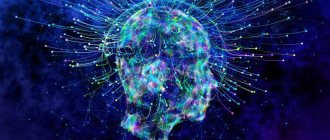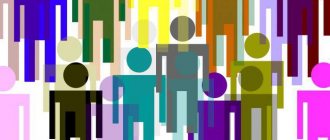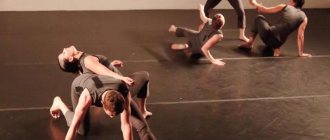Mental activity unfolding in peculiar conditions is what kind of activity
PEDIC CAMPUS | ANSWERS TO TESTS | EXAMINATIONS | COURSES post pinned
“General psychology”
The correct answer is marked with a “/” symbol 1. What is the name of the method of collecting primary information by asking questions to respondents? voting\interview testing questionnaire
3. Mark the tasks of psychology: /analysis of the development of mental phenomena /promoting the systematic implementation of psychological knowledge into practice /qualitative study of psychological phenomena /study of certain physiological mechanisms of psychological phenomena
4. What does pathopsychology study? abnormal individual and socio-psychological phenomena, features of mental processes occurring in the human body during space flights, including the impact on the psyche of large physical overloads, disorders and disorders of mental activity in various diseases, promoting the development of rational methods for their treatment / features of mental disorders due to certain deficiencies in the structure and functions of the body
6. What is the name of incorrect transfer of a skill that impairs the performance of an activity and interferes with the formation of a new skill? /interference of skills diffusion of skills induction of skills differentiation of skills
7. Sensations that reflect the properties of objects and phenomena of the external environment are called: proprioceptive / exteroceptive interoreceptive external
8. Imagination based on what you read or hear has a name: passive imagination creative imagination/reproductive imagination active imagination
10. What is the name for the property of living, highly organized matter, which consists in the ability to reflect with its states the surrounding objective world in its connections and relationships, necessary for a person or animal to be active in it and control their behavior? psychotype / psyche psychology genetics
11. Which branch of psychology studies psychological phenomena and processes determined by a person’s belonging to specific communities? developmental psychology animal psychology/social psychology educational psychology
13. What is the name of the science of the patterns of mental search? psychoanalysis psychodiagnostics / heuristics psychoanalyst
14. Indicate the main provisions of the theory of reflection: /Personality and activity are in unity. Mental reflection is objective, since it depends on objective conditions. Mental reflection is a mirror, mechanical, passive copying of the world, it is associated with choice, search /Incoming information is subjected to specific processing in connection with needs and needs
15. What is the name of this type of research in which the researcher does not measure or observe the actual behavior of the subject, but analyzes a wide variety of products of his creativity? projective methodology / analysis of activity products testing questionnaires
16. What types of tests are distinguished by content? /personality tests /ability tests questionnaire tests /intelligence tests
17. What scientific direction studies the psychology of offenders and criminals, as well as issues reflected in judicial practice? medical psychology criminogenic psychology/legal psychology military psychology
18. Indicate the advantages of the experimental method: / natural behavior of the subject, uncertainty in time / the ability to control the research process, carrying out the procedure with a small number of subjects
19. Which temperament is characterized by high neuropsychic activity, variety and richness of facial expressions, emotionality, impressionability and lability? /sanguine phlegmatic choleric melancholic
Source
Mental emotional processes
Let's consider each process separately.
1
Feelings
Feeling is a human emotional process that reflects a subjective evaluative attitude towards abstract or real objects. Feelings manifest differently among people because they are influenced by their own set of individual traits and personality traits. Necessary for communication, friendship and understanding of other people.
Properties of feelings:
2
Emotions
Emotions reflect a subjective evaluative attitude towards objects, phenomena, situations and people. With the help of will, a person can evoke any emotion that he deems necessary.
The properties of emotions completely coincide with the properties of feelings.
3
Stress
Stress is a set of adaptive reactions of the psyche to stressors.
There is positive (eustress) and negative (distress) stress. The difference is in intensity: the more of it in the psyche, the worse.
4
Affects
Affects are emotional processes of an explosive nature. In many cases they are considered a negative manifestation of the psyche, but in a threatening situation they can save lives.
Areas and directions of activity research
Due to the fact that activity is inherent in all living things and is a method of adaptation and a condition for the reproduction of its various species, the topic of activity is very significant for many human sciences, including psychology.
The most clearly distinguished activities are: mental, cognitive; mental, intellectual, creative, cognitive, artistic, labor, behavioral, which, according to V.D. Nebylitsyn, “significantly depend on the level of excitation created in the frontal structures of the cortex by the ascending influences of the reticular formation of the midbrain.” V.L. Khaikin, in his work “Activity: Characteristics and Development,” summarized the available information on the main directions and areas of activity.
One of the most developed areas is mental activity . Research has put forward a number of important positions when comparing mental activity with the property of activation, that is, with the individual level of activation identified by E.A. Golubeva, which becomes of great importance in the knowledge of activity in its wide representation.
Activation is interpreted by E.A. Golubeva as “an unconditioned reflex balance of excitation and inhibition, expressed in the parameters of stable characteristics of different people according to the ratio of activating and inactivating influences in their encephalograms.” The characteristics of the individual activation level in the works of E.A. Golubeva and her colleagues use EEG indicators: alpha complex, harmonics and vertex potential amplitude. These indicators are considered as natural characteristics of individual people, determining their level of activation.
Revealing the neurophysiological prerequisites for activity, researchers (both E.A. Golubeva and N.S. Leites, A.I. Krupnoe, B.R. Kadyrov and V.D. Mozgovoy, I.M. Paley, V.M. Rusalov et al.) showed a complex relationship between natural features that determine the level of activation and mental activity. So, B.R. Kadyrov in his study identified a U-shaped relationship between them, explained by a conscious, developed orientation towards novelty in a group of low-activated individuals, which ensures that they reach the level of highly activated individuals who have a real craving for “diversity.” These conclusions, which reveal, in particular, the sources, ways of implementing and increasing activity, become important, because in general, numerous studies of mental activity have made it possible to present its structure, identify individual components and characteristics, and understand their interrelationship.
In almost any situation in human life, cognitive activity manifests itself. Cognitive activity has a connection with the most important psychological characteristics of human activity. This activity involves obtaining a cognitive result, which is experienced by a person as a feeling of satisfaction from receiving information, as a phenomenon of “insight” when solving a problem, accompanied by positive emotions, a feeling of satisfaction from the process itself and its result.
Lisina M.I., as a researcher of mental activity , believes that the central core of mental activity, which has a more limited scope than activity in general or mental activity, consists of cognitive functions and processes.
D.B. Bogoyavlenskaya and I.A. Petukhova define mental activity as “the need for mental activity,” and N.S. Leites gives an expanded formulation, pointing out that “mental activity. largely expresses the naturally determined Need for mental impressions and mental conditions.” Moreover, the simplest form of mental activity is, as B.R. established. Kadyrov, the desire for diversity.
N.S. Leites also came to the conclusion about the essence of mental activity as broad curiosity, no matter what psychological means it is realized: intellectual, perceptual, or even purely sensory.
According to M.R. Ginzburg, “intellectual activity is an adequate unit that reflects the process of interaction between cognitive and motivational characteristics of creativity in their unity.”
Creative activity . The concept of intellectual activity is closely related to the phenomenon of creativity, which, according to N.V. Pushkin, means the highest forms of this activity. In this vein, we study such an area as creative activity. This human activity is manifested in the process of creating material and spiritual values, characterized by novelty, originality, and uniqueness. The psychological basis for the manifestation of creative activity is a person’s abilities, motives, and skills. For the manifestation of creative activity, an important role is played by the level of development of imagination, intuition, unconscious components of mental activity, and the individual’s needs for self-actualization. During the initial study of creative activity based on self-reports of artists and scientists (methods of introspection), a special role was assigned to insight, sudden insight, inspiration that replaces mental activity.
G. Wallace considered four phases of the creative process:
In studies of creative activity in recent years, a special role has been given to imagination, mental flexibility, divergent thinking, as well as internal motivation and passion. In the USA, the most effective method of stimulating creative activity is considered to be the brainstorming method and synectics. When using brainstorming, it is assumed that the control mechanisms of consciousness, which serve to adapt to the external environment, prevent the identification of the creative capabilities of the mind. The neutralization of these barriers is achieved by separating the processes of generating ideas and their critical evaluation. Synectics involves the actualization of intuitive and emotional components of mental activity in conditions of group creativity. Research by N.N. Poddyakova, N.P. Kaloshina, N.I. Lapina, V.V. Sazonov shows the important role of normative knowledge in stimulating the creative activity of both preschool children, schoolchildren, and adults. For example, the development of creative abilities in the educational process is carried out when solving educational problems (A.M. Matyushkin, V.V. Davydov).
Behavioral activity. A significant place in psychology is given to the study of behavioral activity. Here, the work of Dmitry Uznadze and his students within the framework of attitude theory is of particular interest. According to this theory, depending on the needs of the subject and social environment, a certain attitude is created, in accordance with which three types of behavior are carried out. Under the influence of needs and the surrounding situation at a given time, impulsive behavior may arise. Dmitry Uznadze also highlights coercive behavior caused by coercion from other people, the social environment and aimed at meeting the needs of groups, society, and other people. Behavior of this type occurs at a conscious level due to the subject’s recognition of the norms of social behavior. The attitude towards the implementation of such behavior can be formed by the motivation of danger or the need for recognition, involvement in society (group).
If behavior is formed with the active participation of the individual himself and a person decides to act in a certain direction, then he develops an attitude toward volitional behavior. This behavior is associated with the satisfaction of personally significant needs that correspond to the individual’s value orientations and social requirements, with an awareness of the possible results of behavior. Volitional behavior is preceded and accompanied by intense internal activity.
Personal activity. Personal activity acts as a special sphere. When studying it, special attention is paid to the forms, levels of manifestation, dependence on the conditions and nature of the activity in which it is implemented.
It has been established, in particular, that personal activity is characterized by a focus on achieving the final result, which should lead to a feeling of satisfaction from achieving what was planned, to a feeling of fulfilling one’s duty and asserting oneself in the activity being carried out. The implementation of personal activity depends on the degree of effective organization of situations, ensuring the possibility of their compliance with the level of aspirations, potential capabilities of the individual and external requirements for the result.
The subject of sustained attention is communicative activity . Human communicative activity in the multidimensional space surrounding him is studied at different levels and in different forms of its manifestation. It is of particular interest in connection with the development of information systems, including the Internet, which draw people into new forms of connections and situations of dialogue. Significant experience has been accumulated in this area in terms of studying human communication. The result of communication as a special form of activity, as B.F. Lomov, is “not a transformed object (material or ideal), but a relationship with another person, with other people.” This form of activity and its dynamics are determined by the social functions of people, their position in the system of social and industrial relations, their role in a particular community of people, the written and unwritten rules that have developed in society, moral, legal norms, etc.
Communicative activity, direct or indirect (mediated), primarily through writing and other means of mass communication, creates for a person the conditions for his social, cultural, and physical functioning. Thanks to communication, a person masters the experience of the past, exists in the real socio-cultural space of the present, and plans for the future.
Communicative activity manifests itself in “subject-subject” relationships in the form of assistance-reaction, agreement-contradiction, empathy, etc. Disclosure of mechanisms, connections, semantic content, structure of individual meanings of communication, interaction becomes an important task in the psychological study of an individual’s communicative activity.
So B.F. Lomov identifies three classes of communication functions:
Labor activity is subject to special analysis . The most effective labor activity in transforming the environment leads not only to changes in the environment, but also causes changes in the subject himself. It cannot occur without the participation of intellectual, thought processes of planning and control, resolving problematic situations. In production, in any operation that can be performed by an automaton, machine, mechanism, where direct human participation is not required, it still indirectly manifests itself as the activity of the creator of those automatons, machines, mechanisms.
Labor activity is a necessary state and defining characteristic of any professional activity (which in turn is a characteristic and state of labor), socially significant activity, providing the basis for the reproduction of human life, change, self-change of himself. Therefore, a number of specific problems arise here, the solution of which involves a differentiated approach to professional activity as a special labor activity and, at the same time, highlighting the General characteristics of labor activity in its psychological and dimensions.
The most important area and special level of human activity is social activity . Different authors interpret the concept of social activity in different ways, sometimes contrasting and sometimes confusing it with the concept of social activity (L.S. Vygotsky, A.N. Leontiev, S.L. Rubinstein, D.N. Uznadze, as well as G. M. Andreeva, L.I. Antsyferova, D.M. Arkhangelsky, V.T. Afanasyev, M.S. Kagan, K.K. Platonov, A.V. Petrovsky, E.T. Yudinidr): Despite the differences in the definition of these concepts, until now a unified approach to the concepts of “social” and “public” activity has not been established. Some people identify these concepts. So, V.G. Mordkovich uses the concept “social activity” synonymously with the concept of “social activity”. ON THE. Stepanova, for example, considers the concept of “social activity” as generic in relation to the concept of “social activity”. At the same time, A.S. Capto, on the contrary, uses the concept of “social” activity as generic in relation to the concept of “social” activity.
A.V. Brushlinsky quite rightly points out the need to “distinguish between the usually identified two concepts (and terms):
But, despite the lack of unity in the definition of the concept of “ social activity ,” it is the subject of increased attention from researchers.
The social activity of an individual is considered as “the degree of manifestation of his strengths, capabilities and abilities as a member of a team, a member of society” (A.S. Kapto). A number of authors (I.Ch. Hristova, E.G. Komarov, T.V. Tishchenko) define social activity as “an objectively determined subjective attitude and socio-psychological readiness of the individual for activity, which is manifested in corresponding acts of behavior and represents purposeful creative social activity that transforms objective reality and the personality itself.” However, this definition is to a certain extent tautological: social activity is understood as readiness for activity that represents purposeful creative social activity.” At the same time, highlighting the readiness and attitude of an individual to perform socially significant activities is certainly important for characterizing social activity, although it does not fully define it.
A special sphere of activity is supra-situational activity, specially identified and substantiated by V.A. Petrovsky. In his opinion, “in the acts of the subject going beyond the framework of the situation through overcoming the limitations caused by it, in other words, in the phenomena of supra-situational activity, the moment of movement of activity clearly appears, that is, what we designate as the actual activity of the subject.”
Features of supra-situational activity were studied by V.A. Petrovsky in the phenomena of “disinterested” risk, altruistic conduct, “excessiveness” in collective activity, etc.
Source
Intelligence
When characterizing a person’s thinking, they primarily imply his intellectual abilities
, i.e. those abilities that ensure a person’s “inclusion” in a fairly wide range of activities and situations. These intellectual abilities of a person are primarily associated with such characteristics as:
“mental development” and;
"intelligence".
Under mental development
is understood as the totality of both knowledge, skills, and mental actions formed in the process of acquiring these skills and knowledge.
The most general characteristic of the level of mental development is the preparedness of the functioning of thinking within the limits of the age-related socio-psychological standard
(SPN).
That is, the level of mental development should reflect the most typical, general, characteristic features of mental activity for a given society, relating to both the volume and quality of knowledge and skills, and the stock of certain mental actions. The level of mental development achieved by a person depends on his intellectual abilities. Intelligence (or general mental ability) is not the sum of knowledge and mental operations, but what contributes to their successful assimilation. If intelligence is a condition for the acquisition of knowledge and skills, then mental development characterizes primarily the content, methods and forms of thinking. Intelligence
is a relatively stable structure of abilities, which are based on processes that ensure the processing of information of different quality and its conscious evaluation.
Intellectual qualities
are personality qualities that predetermine the characteristics of the functioning of the intellect.
In practice, the diagnosis of mental development arose as intelligence testing and developed in this direction throughout the first half of the twentieth century. It has even become quite common to use the Stanford-Binet IQ test as a “generalized” symbol of intelligence and level of mental development. Intelligence quotient (IQ)
is a quantitative indicator indicating the overall level of development of an individual’s thinking compared to the sample on which the intelligence test was standardized.
Functions of thinking
The functions of thinking are presented in quite a variety of ways. Among them there are four main ones:
- understanding
- problem solving
- goal setting
- reflection
Understanding means revealing the essence of objects and phenomena. Understanding something new is achieved through the interaction of old information with newer information.
In cases where an individual is unable to achieve the goal he has set, when a problem arises in achieving a result, then the thinking process begins to work in the person’s brain. When the thinking process begins, a person begins to analyze, compare, etc. in order to solve the problem that has arisen. The individual cuts off unsuccessful solution options and leans towards more suitable ones.
Goal setting is understood as the process of producing new ideas, that is, the formation of future actions.
The function of reflection in the thinking process is expressed in the fact that the individual directs his actions to comprehend and analyze new knowledge.









